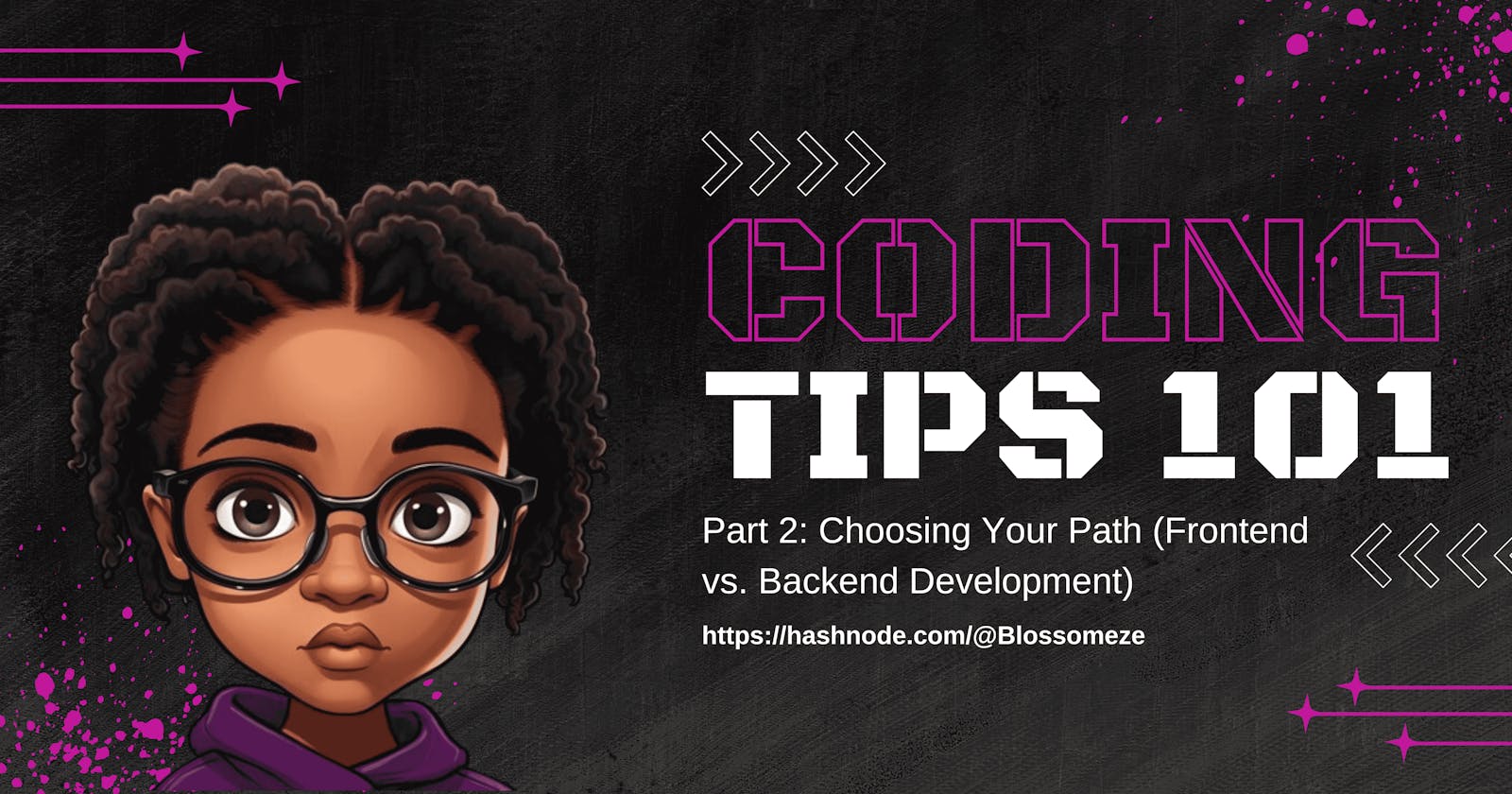Are you ready to embark on a career in web development but torn between choosing frontend or backend development? In this guide, we will explore the differences between frontend and backend development, the key skills required for each, and how to decide which path suits you best.
Frontend Development:
Creating User-Focused Experiences
Frontend development involves building the user interface and creating an exceptional user experience. Frontend developers work with HTML, CSS, and JavaScript to bring designs to life and ensure a seamless user journey. It involves building the user interface and creating an exceptional user experience.
HTML is the foundation of web development, providing the structure and content of web pages. CSS adds styling and visual elements, making websites visually appealing. JavaScript is a powerful language that enables interactivity and dynamic features, such as animations or form validation.
Frontend developers focus on optimizing website performance, responsiveness, and accessibility. They work closely with designers to turn wireframes and mockups into functional interfaces. If you enjoy working with design elements, crafting engaging user experiences, and have an eye for aesthetics, front-end development may be the right path for you.
Backend Development:
The Engine Behind the Scenes
Backend development focuses on the server-side of web development, handling data storage, processing, and security. Backend developers work with server-side languages like Python, Java, or PHP to create the logic and functionality that powers websites.
Backend developers build and maintain databases, ensuring efficient data management and retrieval. They implement authentication and security measures, safeguarding user information. Additionally, backend developers integrate external services, APIs, and work on complex algorithms to handle computationally intensive tasks.
If you enjoy problem-solving, working on server-side logic, and building scalable systems, backend development might suit you. Backend developers optimize website performance and ensure efficient data handling, allowing the frontend to shine.
Choosing Your Path:
To decide between frontend and backend development, consider the following factors:
Personal Interests and Skills:
Think about what excites you the most. If you have a passion for design, enjoy creating visually stunning interfaces, and have strong HTML, CSS, and JavaScript skills, front-end development may be your calling. On the other hand, if you enjoy working with databases, solving complex problems, and have a strong grasp of server-side technologies, backend development may be the ideal fit.Team Collaboration Preferences:
Consider how you prefer to work within a team. Frontend developers often collaborate closely with designers, working synergistically to create visually appealing and functional interfaces. If you enjoy working in a creative and collaborative environment, front-end development offers a great opportunity for teamwork.
Backend development may involve collaborating with other developers, database administrators, or system administrators. If you prefer working independently on complex problem-solving and system architecture, backend development could be the right choice.
- Career Opportunities:
Both frontend and backend development offer promising career paths. Evaluate the current job market and industry trends. Frontend developers are in high demand as businesses recognize the importance of user-friendly interfaces and exceptional user experiences. There are abundant opportunities to work on cutting-edge technologies and frameworks, constantly expanding your skillset.
Backend development also presents exciting prospects. With the rise of cloud computing, cybersecurity, and data-intensive applications, expertise in backend technologies can lead to diverse career opportunities, such as data engineering, system architecture, or DevOps.
Conclusion:
Choosing between frontend and backend development depends on your skills, interests, and career aspirations. Frontend development caters to those passionate about crafting visually appealing interfaces and seamless user experiences. Backend development appeals to problem-solvers and developers who enjoy working on the logic and systems that power websites.
Take the time to assess your strengths, preferred work environment, and industry demands before deciding. Remember, a successful website requires both frontend and backend functionalities to deliver an exceptional user experience. Whichever path you choose, ongoing learning and staying up-to-date with industry advancements are key to thriving as a web developer.
